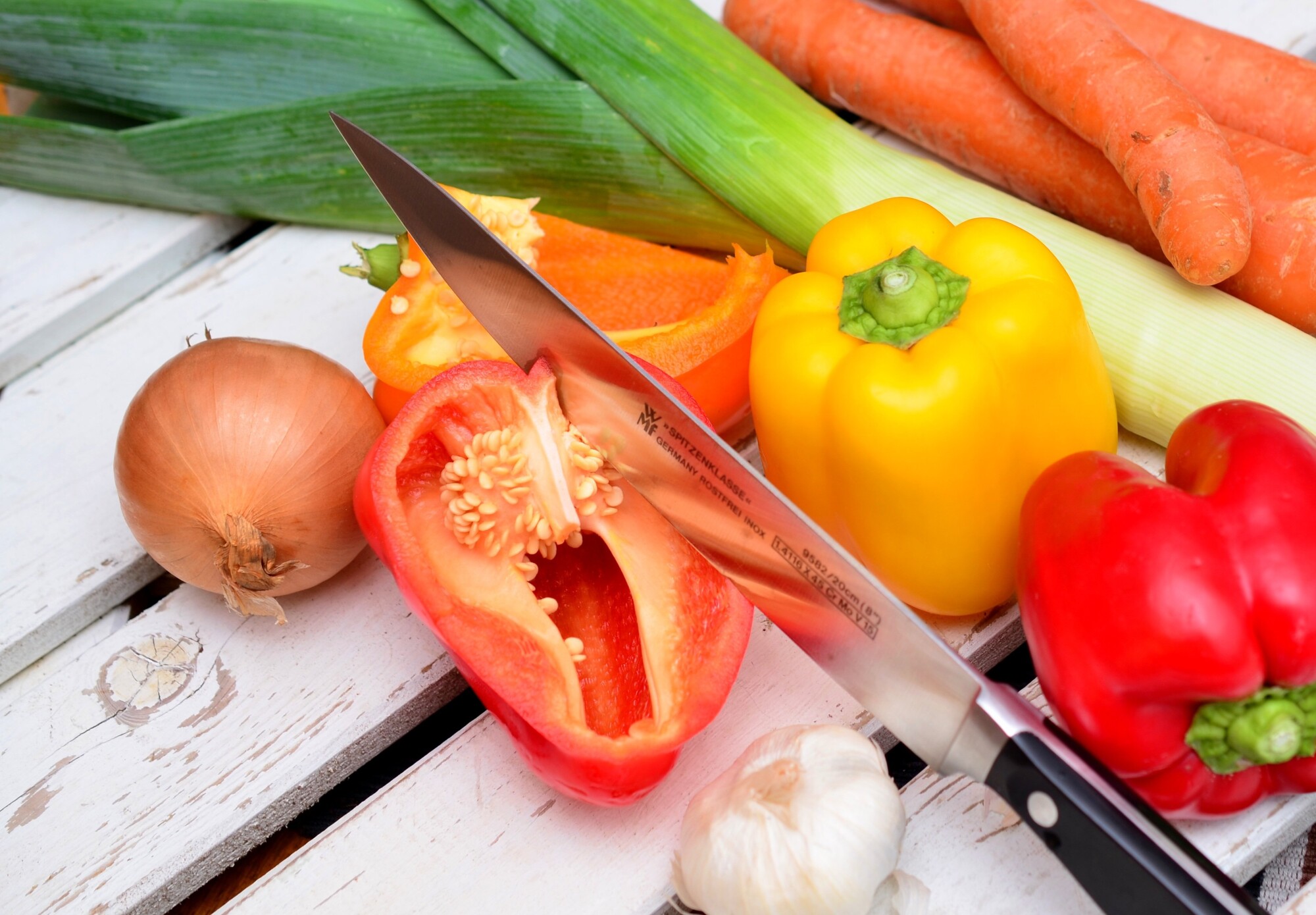
Did you know that approximately 36% of Americans cook at home on a regular basis?
With the onset of the pandemic, more and more people are discovering the joy of making meals from scratch, and those who already cook at home are keen to enhance their home cooking skills even further. Knife skills are an indispensable asset for those wanting to become better cooks.
We’ve put together this cutting-edge guide to help you unlock and utilize a range of useful knife skills. From the very fundamentals to culinary arts knife skills, we’re here to show you how to practice knife skills and perfect them.
Read on and learn how to improve your skill and etiquette with a kitchen knife today.
Know The Knives
Before you can master the basic knife skills, you’ll want to learn a little about the Japanese knife types you’ll be working with. Kitchen knives come in a wide variety of shapes and sizes.
Learning about them now will for a strong basis for your new knife skills. A typical knife set will contain the following.
Chef’s Knife
A chef’s knife is probably the most commonly used kitchen knife. It is a versatile tool used for chopping, dicing, and mincing. A quality chef’s knife should be the centerpiece of any good knife set.
Utility Knife
Utility knives are similar to chef’s knives but with a smaller, more slender frame. They are used for knifework that requires more care and precision.
Paring Knife
Paring knives are used to skin, peel and trim vegetables. They are available in various sizes and designs, and serious chefs will own a range.
Bread Knife
A serrated bread knife is essential for cutting bread or other materials without crushing or tearing them. Bread knives are longer than other types of knives.
Cleaver
A cleaver is a butchering knife used for heavy-duty cutting tasks. Sharp and heavy, it is perfect for splitting through bones and breaking down whole carcasses.
Boning Knife
A boning knife is used for trimming meat like chops or bone-in steaks. A good boning knife cuts effortlessly through cartilage and is ideal for removing fat without damaging the meat’s tissues.
Never Compromise on Quality
As you pick up new knife skills, you’ll also learn that a craftsman is only as good as his tools. In this spirit, be sure never to compromise on the quality of your kitchen knives.
If you’re serious about improving your cooking knife skills, invest in high-quality steel. You’ll find the learning process much more straightforward and less frustrating with the right tools to hand.
There’s really no limit to what you can spend on kitchen knives, but you should be sure to avoid the cheapest factory-made models if you want to improve your knife skills.
Check out messermeister.com for a stunning collection of premium kitchen knives you can rely on.
Stay Sharp
Maintenance is key to a functional knife. When learning basic knife skills, a dull blade will hamper your progress and lead to frustration.
Make a habit of sharpening your life before and after each use. A reliable whetstone is just as important as your knives themselves. Even if you don’t own a complete knife set, keeping your knives as sharp as possible pays.
Save time and learn faster with a keen blade in your hand. Trust us; this is one tip you won’t want to forget.
Use a Cutting Mat
A cutting mat can add stability to your cutting station, allowing you to focus on your newly learned knife skills without worrying about your chopping board moving around.
While this doesn’t directly affect the way you handle your knife, it allows you to hone your skills in a safe, efficient manner.
Start Simple
While it’s something you might take on in the future, nobody expects you to process an entire pig or start whipping up exquisite sashimi straight away.
Instead, focus your learning energy on everyday ingredients, like onions, carrots, and potatoes. Soft vegetables are much more forgiving to sloppy knifework than other ingredients, and they won’t spoil the presentation of your meal if you make a couple of mistakes.
Gain a firm grasp of the basics before attempting more advanced knife skills in the kitchen.
Get a Grip
Many think that a few knicks and cuts are all part of the learning process. However, it doesn’t have to be this way.
By perfecting a safe grip and chopping technique early on, you’ll save on unnecessary flesh wounds as you perfect your knife skills.
Hold your knife by the handle with your dominant hand. Then, while keeping the knife pointed away from your body, pinch the top of the blade between your thumb and index finger.
This gives you complete control over your knife as you process your ingredients.
Take on the Challenge of Exciting Meals
As you become more comfortable with basic knife skills, apply your gained knowledge to progressively more challenging and exciting meals.
If you’re comfortable with veg prep and cut-trimming, challenge yourself with a whole chicken to butcher. Once you’ve mastered that, you can think about moving onto culinary arts knife skills, such as the chiffonade and julienne techniques.
Level Up Your Knife Skills Today
When it comes to honing your knife skills, practice makes perfect. We cannot stress enough the value of patience and persistence.
Set realistic goals, and master each aspect of knife handling before moving on to the next. That way, you’ll build an impressive set of knife skills on a foundation of solid technique.
Did this article inspire you? If so, check out the rest of our blog for more topics and discussion.
